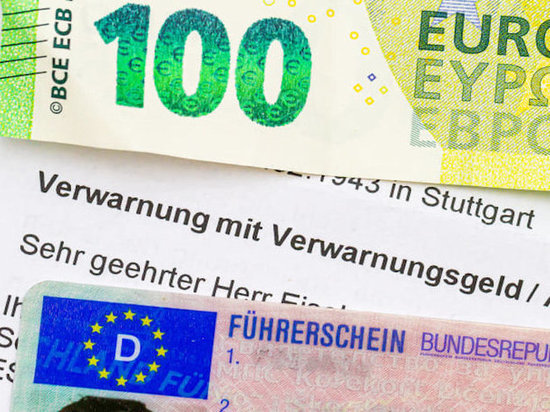
─ Good afternoon, dear employees of the column “I have the right”!
Recently, overtaking an agricultural vehicle, I slightly exceeded the permissible speed. At the same time, at the time of overtaking, the radar photographed me. At that moment I was just changing the lane. The car was at an angle to the radar. It was on a country road. It was possible to drive 70 kilometers per hour, the agricultural machine drove 50 kilometers. I exceeded the maximum by 5 km / h. Well, I could not go 95 km, as they wrote to me. In a word, I received a fine for exceeding by 21 km / h. This is a point and a rather large amount, I have filed an appeal. But I really need support. Friends say that the fine that came to me is a deception. How do you recognize it?
Elina, T, Cologne.
─ The notice of the excess penalty is delivered in a yellow envelope. In the upper right corner of the envelope, the delivery date is entered by hand. Starting from this date, there is a deadline for protesting, this is important. As a rule, prior to this comes a preliminary written hearing, during which you have the opportunity to present your reasons and facts for and against that there was a violation.
The deadline for protesting the delivered notice of violation and fine is two weeks from the date of delivery. If you are not sure that there was a violation, then it is recommended to file a complaint in a timely manner in order to get time for a detailed investigation.
Formally, the notification must contain the following basic data: information about the respondent and possible other parties involved, including the name, address, registration number, name and address of the state body that issued the notification, information about the violation, such as time, place, legal determination of the composition of the violation and the applicable provision in the fine law, details of the evidentiary base, for example a photograph, the technical device used, witnesses, the technical meter, and so on. In addition, data on the amount of a fixed fine and possible secondary consequences, such as a ban on driving, should be contained.
An important integral part of the legal correctness of such a notice is information about the remedy, indicating that the administrative order imposing a fine becomes final if an appeal is not filed, and information that the appeal may also have a negative outcome for the person concerned … In addition, it must be stated how long the person concerned can appeal and how long the penalty must be paid. Finally, it should also be stated that if the payment is not made on time and the reasons are not given, then judicial enforcement action will be taken.
If any of these details are wrong, it increases the chances of a successful appeal. However, not every mistake will invalidate the penalty notice. This must be a serious mistake, such as incorrect information about the time or place of the violation, or about the individual to whom the violation is imputed.
Much more common than formal errors are technical or operational errors, especially in speed measurements and violations of distance or red light. Then these are the so-called errors in the proof. For example, measuring instruments should be calibrated and adjusted and only competent, trained personnel should be allowed to work with them.
Even an incorrect tilt angle of the mobile speed meter to the roadway can lead to errors, as well as in some cases the tilt angle to reflective objects such as walls or trucks, faulty distance sensors, and so on. In some federal states, the authorities should not be allowed to use certain instruments at all, as even experts cannot understand how the measurement results were obtained.
Incidentally, in the case of photographs for purposes of evidence, the person depicted must be sufficiently recognizable and thus identifiable.
The addressee of the notification can familiarize himself with the dossier in the authorities, but this is not always effective due to lack of competence. A lawyer specializing in administrative law, on the other hand, examines the proceedings and can then determine if, and if so, what errors are contained in the notice of the fine or in the proceedings in general.
Traffic law insurers are in a better position – the insurance usually also covers the costs of both the appeal and the court proceedings.
Anyone who wishes to make an appeal on their own should pay attention to the following points.
The appeal must be in writing, it must be addressed to the competent authority, the recipient must be indicated, the record number, justification, date of the appeal and signature must also be present. We recommend sending by registered mail, so that later you can prove the delivery date. It is very important that the deadline is met when the letter is delivered within this deadline, the date of sending does not matter.
If the addressee of the appeal does not agree with your arguments, and does not satisfy your appeal, then the case is referred to the local territorially responsible court, which sets the date of the oral hearing for the court pleadings.
Ksenia KRUG, lawyer,
Schanzenstraße 102, 40549 Düsseldorf,
info@krug-recht.de,
0211 16377014,
www.rechtsanwalt-krug-duesseldorf.de
Germany says this:
Doctors in Germany warn: places in intensive care may run out in three weeks
Germany: Students will receive financial aid again
Germany: New rules for entering Germany from November 8
Germany: Lufthansa launches express tests for all passengers on November 12